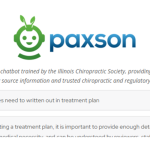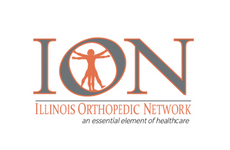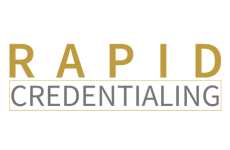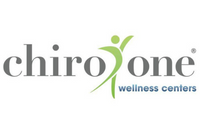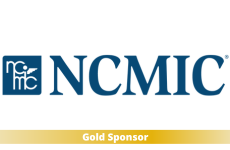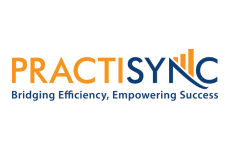
The Cures Act – How the Requests Come In
Have you been wondering how records requests will be submitted to your practice with the Cures Act now being applied? We cover this topic in this week’s video. Watch to learn more!
Referenced links:
https://ilchiro.org/cures
Transcript:
One of the big questions that we get surrounding the Cures Act, and if you haven’t followed our information, I would encourage you to jump out, and take a look. We’ve got several videos you can check out on the YouTube channel, or you can just go to our website, go to ilchiro.org/cures, and check out everything there. But one of the biggest questions that we get is, okay, Marc, this is fine and dandy, and you tell us not to worry or be fearful of it, just to be diligent. But really, how are these requests going to come in? And so we do get that question a lot, and so I want to kind of answer that because it’s going to be new. It’s going to be in a new methodology, different than a lot of what we’ve seen. A lot of times, what we have seen in the office is, you know that the requests come in via fax, or you get a letter or even an email, you know, from the patient or a patient representative requesting copies of the medical record. Or you get something similar from a provider who is looking to take over care or to enhance care, you know, the patient’s looking to see, and they get all the medical records. So that’s kind of the historical way that it happens and you’re still going to see that happen in your practice, and you’re still going to see those requests come in like that. Where we’re going to see the Cures Act begin to shift how a lot of these things happen is how those particular Cures Act requests are going to come. Remember that the Cures Act really is centered around the need for the patient to be the center of their medical record and have full control of their medical record so they can share it quickly with any provider that they need to see, no matter where they are. And so the way that ultimately these requests will hit your office by continuing to make that patient at the center of their care is through apps, right?
Our phone really drives a lot of things. We have apps that do a lot of things. You know, you may have a travel app like TripIt that ultimately monitors your email and sees if you have any confirmations for any travel that you have, automatically loads it into a central location. You can keep track of all of your travel receipts and everything inside of that. And then also maybe even links to your Google Calendar or your iCal to be able to track all of that and see how that is going to play out, you know, on your calendar or, you know, in one in one small little spot. Now imagine that happening with the medical record. And so ultimately, what happens is, is the patient can utilize these apps to make the requests. Now, we don’t see a lot of this because the deadline was just, you know, back on the fifth about a week and a half ago, but it’s coming, and so ultimately, the way you’ll see this happen, and if you want to grab your phone, pull up my chart. Many of you probably already have my chart installed on your phone. Most hospital systems in Illinois are using the epic EHI system, and it handles all of that and their portal is called My Chart for patients. It’s a good chance that you may have it on your phone. You can check out a lot of the interoperability things that are already built-in on my chart. But now imagine if my chart, or if you know Apple Health Records adds a button that indicates, you know, please list all of your providers, or are you missing medical records? And the patient clicks, yes, I’m missing medical records. It says, to key in your provider information for the provider you know that you want to add in their medical records, and so they key in your name, right? So they key in all of your information. Dr Joe Smith, out of wherever, right? And they can that information. They give it over to their app, and then the app will follow up with an additional question. They’ll say, would you like us to request medical records on your behalf to be stored inside the app? Patient clicks, yes. That’s the kind of general method that a lot of these are going to come in.
Now with certified software, they’ll have an API built in, and without getting into the technical details, we cover that in the articles and then our webinars that we’ve already held, it’s a handshake, and it’s a way for them to transfer information, and so ultimately, it connects up with your certified system and drags that information out. If you don’t have that certified system, then at that stage, it’s going to require human intervention, right? And we cover all of that in detail, and that’s why it’s important to read through the articles. It’s important to watch the webinars to understand how you can comply, and how you can make this work in your practice because it’s going to require human intervention if you do not have that certified software, and the vast majority of our doctors probably aren’t going to have that right now.
So as these requests come in, know that they’re going to be coming from apps. You’re going to have to comply and walk through the steps. But that’s the way we see that. If you’re wondering, Well, Marc, it’s only you know, it’s only my chart. Well, no, actually, there are about 36,000 different health record style applications, apps already out there in the Google Play and Apple I iTunes Store, so it’s already out there, right? And it’s a matter of when the software developers begin to understand that they can gather this data and be of a better service to their clients or your patients, as the case might be, and when they flip the switch. And turn on the button that asks the patient if they want to include your medical records in their app. That’s when the requests are going to come in. That’s the volume. It’s a bit more complicated than that even, and it’s potentially a bit more demanding of your office than what that may even seem on the surface, because you probably will get repetitive requests after that, following each one of your appointments. But I won’t go into the details. Just know that it’s gonna be very app-driven, patient-driven, the patient’s the center. If you haven’t followed up with all of our articles and our on-demand education, I would encourage you to jump out and do that. And in fact, yesterday we did the second of Tuesday of this week. We did the second of our two-part Cures Act webinars to help you to really drive compliance in your office and help you actually put all of this into play. Hopefully, this helps you out, and we’ll catch you next week.



